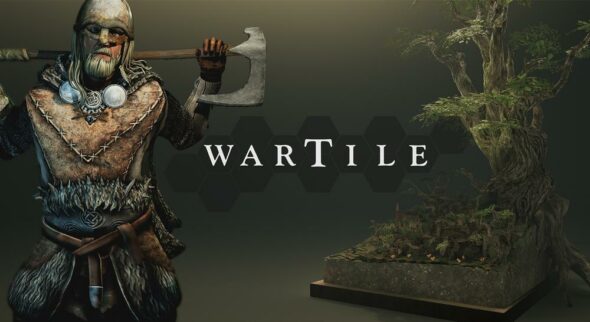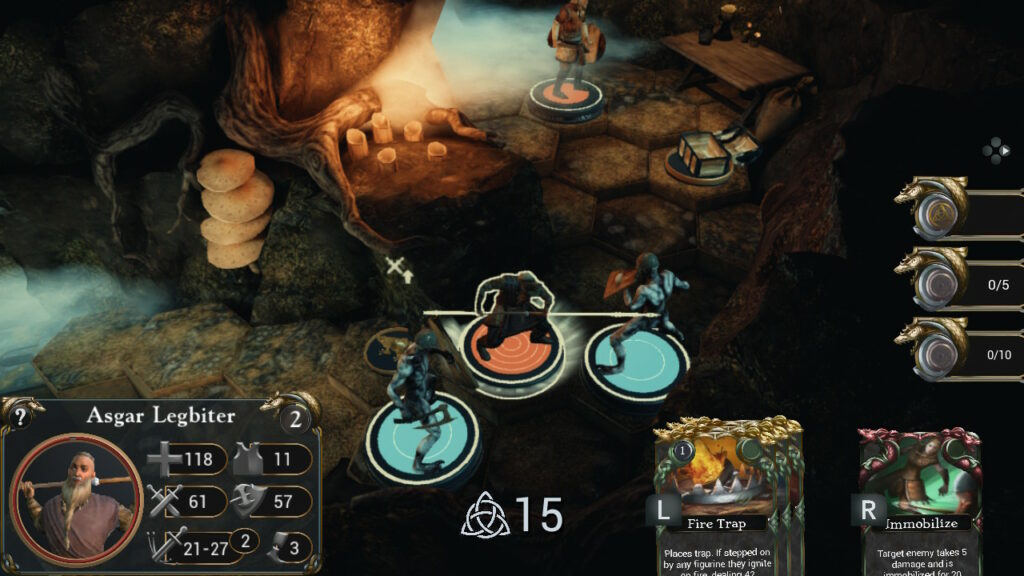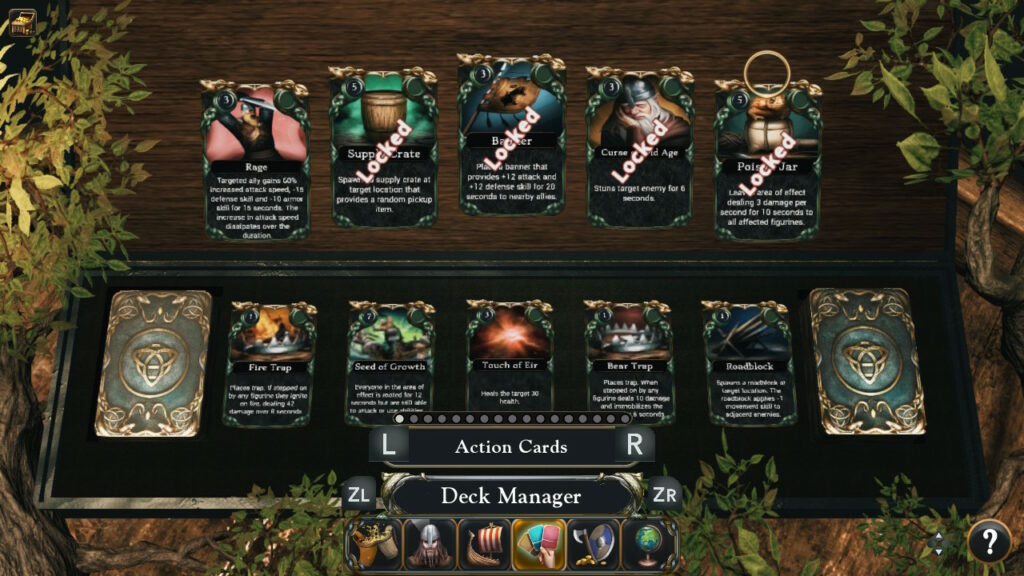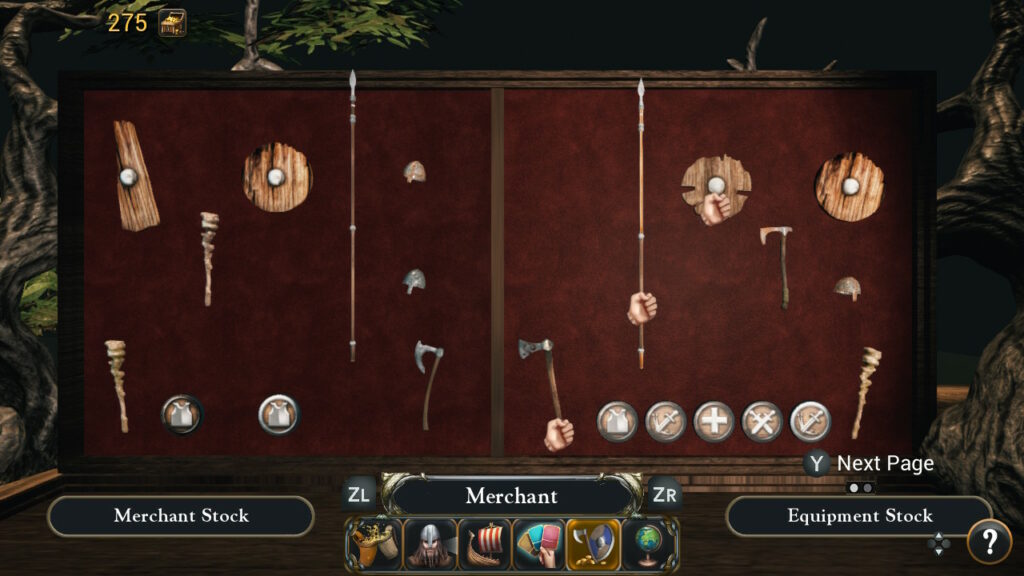
Developer: Playwood Project
Publisher: Deck13
Platform: Switch, PC, PS4, Xbox One
Tested on: Switch
Wartile (Switch) – Review
We imagine most gamers will be intrigued by Wartile when they see screenshots of the game. The tabletop wargame aesthetics are what makes developer Playwood Project’s RTS title stand out from its competition in the genre. The question is whether there is good gameplay hiding behind the cards and miniatures that Wartile puts in plain sight. Is Wartile worth your time or is it a matter of style over substance?
Story
Wartile’s story is delivered as a narrative campaign, befitting the tabletop aesthetic. A narrator takes on the role of a dungeon master of sorts, as he describes the story events that set each campaign map in motion and directly addresses the player. The player character’s role in the story is that of the son of a Viking chieftain. As a mysterious plague spreads across the lands and reaches your home village, your father, the chieftain, succumbs to the aforementioned plague. Your character has to take up his mantle and provide protection for the village. As you set out to deliver a sacrificial goat to the Gods, you’ll soon discover that the plague has a much more sinister origin than you initially expected. The dead walk the earth again and it is up to you and your companions to save the world from impending doom.
Graphics
Wartile sets itself apart from other strategy games through its aesthetic. The game takes on the appearance of a full-fledged tabletop war game in the same vein as Warhammer or Heroscape. Characters are represented by miniature models and the battlefields are meticulously crafted game boards. While these don’t fully compare to the real deal, the result is still pretty close. This approach continues in other aspects: miniatures can be customized and objectives and special rules are present in the form of a deck of cards. While it would be impossible to actually recreate Wartile’s gameplay as a tabletop game, as the real-time gameplay is too fast-paced and chaotic for that, we imagine seasoned wargamers will be inspired by the boards themselves. The beautiful presentation here does come with a few downsides. We noticed frame drops when the action became more intense. The camera controls aren’t the smoothest either, and we found ourselves zooming out more than we wanted as a result.
Sound
The music of Wartile perfectly fits the Norse mythology-inspired setting, bringing to mind the score of series like Vikings. It’s dramatic, dark and ominous. The sounds of battle are no less impressive: the groans and cries of your characters emphasize the intense nature of the battles they fight on the tabletop. Unfortunately, the monotonous delivery of the storytelling is a letdown that drags down Wartile’s soundscape as a whole. The narrator comes across as bored and disinterested as he reads out the on-screen story blurbs.
Gameplay
Given Wartile’s board game-like aesthetics, one would assume you’re looking at a turn-based affair, but in fact, Wartile is a real-time strategy game. The game offers a massive narrative campaign with each map doubling as a chapter in Wartile’s story as well. A chapter takes on the form of a tabletop battle where a player uses wargaming miniatures to duke it out against an AI. Players start out with two miniatures but will build up a collection as they progress through the campaign. Each map offers a mission with set objectives that you have to clear in order to progress the story. Bonus objectives are also present, and completing these will result in better rewards upon mission completion.
Missions typically involve killing a certain number of enemies, reaching a specific spot on the game board or obtaining an item. You’ll find that each miniature has its own strengths and weaknesses and that certain characters in your collection are better suited for the task at hand than others. The success of a mission often relies on picking the perfect characters for the job. You can customize the characters to a certain degree, and to many a wargamer’s delight, this will actually involve swapping entire model parts around, including full arms. An additional level of customization comes in the form of ability cards. These can be equipped after they’ve been unlocked through gameplay. The weapons a miniature carries determine how it fights, and which special attacks it can use. These special attacks come with a cooldown to prevent you from spamming them. Speaking of cooldowns, movement comes with one as well.
Moving a miniature involves dragging them across the board’s hexagons up until their maximum move distance, which comprises a certain number of hexes. After moving a miniature, you’ll have to wait for the associated cooldown before you’re able to move it again. This takes some getting used to at first, as most of the game’s action takes place in real-time, yet the game’s pace is fast enough as to not be hampered by this mechanic. You can move your miniatures one at a time or if you need them all to move towards the same spot, you can actually “grab” all of them and move them simultaneously. This allows you to react quickly but also means you’ll lose some tactical finesse.
If you’ve never played a tabletop wargame, you might feel a bit intimidated by Wartile’s approach but rest assured that the game adheres to the age-old expression “easy to learn but hard to master”. The level of accessibility means that anyone can get into Wartile after playing through the early levels, yet the tactical flexibility involved with character customization and ability cards means that veterans will find plenty of strategic meat on Wartile’s bones.
That’s not to say Wartile feels like a complete package. One thing we expected to see but found sorely missing was a multiplayer element. Given both the nature of tabletop wargaming as a social hobby and the immense degree of customizability, Wartile perfectly lends itself to PvP, either as a local multiplayer game or online. Because of this, we were genuinely disappointed to learn that the game only offers single-player gameplay. Don’t get us wrong, you’re still getting about 30 hours worth of content here if you’re a completionist, but this easily could’ve been hundreds of hours if the game offered a two-player mode.
Conclusion
It’s easy to fall in love with Wartile’s aesthetics as well as with the unique gameplay that is present here. The narrator’s indifference makes it difficult to really get into the right mindset to enjoy the story, but once you get over his delivery there’s a well-written campaign waiting for you. The real sore thumb sticking out here is the lack of multiplayer, which prevents Wartile from being a great game instead of just a good one.
Wartile (Switch) - Review,









No Comments